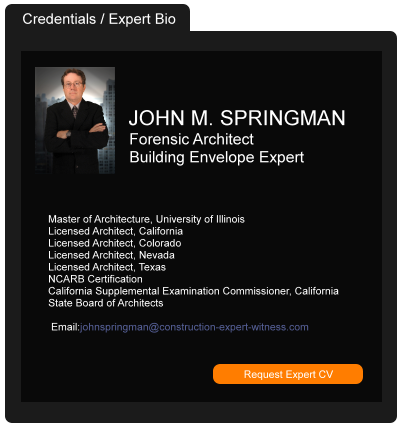Connecticut Builders Right To Repair Current Law Summary:
Current Law Summary: Case law precedent
Building Expert Contractors Licensing
Guidelines Fairfield Connecticut
License required for electrical and plumbing trades. No state license for general contracting, however, must register with the State.
Association Directory
Local # 0780
433 Meadow St
Fairfield, CT 06824
http://www.buildfairfieldcounty.com
Fairfield Connecticut Building Expert 10/ 10
Builders Association of Eastern Connecticut
Local # 0740
20 Hartford Rd Suite 18
Salem, CT 06420
http://www.baec.net
Fairfield Connecticut Building Expert 10/ 10
Home Builders Association of New Haven Co
Local # 0720
2189 Silas Deane Highway
Rocky Hill, CT 06067
http://www.hbanewhaven.com
Fairfield Connecticut Building Expert 10/ 10
Home Builders Association of Hartford Cty Inc
Local # 0755
2189 Silas Deane Hwy
Rocky Hill, CT 06067
http://www.hbahartford.com
Fairfield Connecticut Building Expert 10/ 10
Home Builders Association of NW Connecticut
Local # 0710
110 Brook St
Torrington, CT 06790
http://www.hbanwct.org
Fairfield Connecticut Building Expert 10/ 10
Home Builders Association of Connecticut (State)
Local # 0700
3 Regency Dr Ste 204
Bloomfield, CT 06002
http://www.hbact.org
Fairfield Connecticut Building Expert 10/ 10
Building Expert News and Information
For Fairfield Connecticut
Baltimore Bridge Collapse Occurred After Ship Lost Power Multiple Times
Too Costly to Be Fair: Texas Appellate Court Finds the Arbitration Clause in a Residential Construction Contract Unenforceable
Utah Supreme Court Allows Citizens to Block Real Estate Development Project by Voter Referendum
Wendel Rosen’s Construction Practice Group Receives First Tier Ranking by U.S. News and World Reports
California Commission Recommends Switching To Fault-Based Wildfire Liability Standard for Public Utilities
Withholding Payment or Having Your Payment Withheld Due to Disputes on Other Projects: Know Your Rights to Offset
Insurer Sued for Altering Policies after Claim
New Jersey Legislation Would Bar Anti-Concurrent Causation Clause in Homeowners' Policies
Why Federal and State Agencies are Considering Converting from a “Gallons Consumed” to a “Road Usage” Tax – And What are the Risks to the Consumer?
Impact of Lis Pendens on Unrecorded Interests / Liens
Fire Damages Unfinished Hospital Tower at NYU Langone Medical Center
Look Out! Texas Building Shedding Marble Panels
Remote Depositions in the Post-Covid-19 World
Illinois Town Sues over Construction Defects at Police Station
Maryland Court Affirms Condo Association’s Right to Sue for Construction Defects
Contractors Struggle with Cash & Difficult Payment Terms, Could Benefit From Legal Advice, According to New Survey
Construction Litigation Roundup: “Builder’s Risk Indeed”
PSA: Pay If Paid Ban Goes into Effect on January 1, 2023
Ninth Circuit Holds that 1993 Budget Appropriations Language Does Not Compel the Corps of Engineers to use 1987 Wetlands Guidance Indefinitely
WSHB Expands to Philadelphia
California Supreme Court Finds Vertical Exhaustion Applies to First-Level Excess Policies
The Anatomy of a Construction Dispute- The Claim
Sureties and Bond Producers May Be Liable For a Contractor’s False Claims Action Violation
Florida Death Toll Rises by Three, Reaching 27 as Search Resumes
Taking Care of Infrastructure – Interview with Marilyn Grabowski
Flow-Down Clauses Can Drown Your Project
Hurry Up and Wait! Cal/OSHA Hits Pause on Emergency Temporary Standards for COVID-19 Prevention
New Jersey Court Rules on Statue of Repose Case
Issues of Fact Prevent Insurer's Summary Judgment Motion in Collapse Case
Red Wings Owner, Needing Hockey-Arena Neighborhood, Builds One
Potential Construction Liabilities Contractors Need to Know
Fall 2024 Legislative Update:
The Future Looks Bright for Construction in 2015
South Carolina Supreme Court Requires Transparency by Rejecting an Insurer’s “Cut-and-Paste” Reservation of Rights
Maybe California Actually Does Have Enough Water
Thanks for the Super Lawyers Nod for 2019!
Is Equipment Installed as Part of Building Renovations a “Product” or “Construction”?
Construction Lien Waiver Provisions Contractors Should Be Using
Fires, Hurricanes, Dangerous Heat: The US Is Reeling From a String of Disasters
Can I Record a Lis Pendens in Arizona if the Lawsuit is filed Another Jurisdiction?
Three lawyers from Haight were recognized in The Best Lawyers in America© 2020 Edition
Jury's Verdict for Loss Caused by Collapse Overturned
Contractors Board May Discipline Over Workers’ Comp Reporting
Definitions Matter in Illinois: Tenant Held Liable Only for Damage to Apartment Unit
Latosha Ellis Selected for 2019 Leadership Council on Legal Diversity Pathfinder Program
Know your Obligations: Colorado’s Statutory Expansions of the Implied Warranty of Habitability Are Now in Effect
Wall Street’s Palm Beach Foray Fuels Developer Office Rush
Significant Ruling in PFAS Litigation Could Impact Insurance Coverage
Not So Fast, My Friend: Pacing and Concurrent Delay
A Game of Texas Hold’em: How Texas Stopped Wage Increases for Salaried Exempt Employees Nationwide


































































